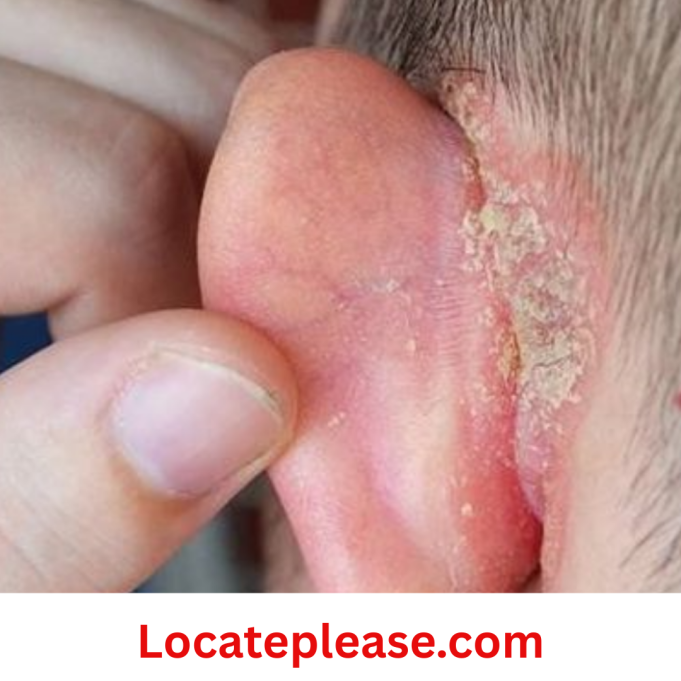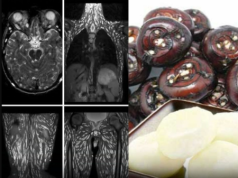The morning light catches a patch of skin on your child’s ear you’ve never seen before. Your breath hitches. Your mind races to the appointment still days away. What is this? Is he in pain? Should I rush to the ER?
This worry is sacred.
It’s love wearing a worried face.
But here’s what’s also true:
Most unusual skin patches are not emergencies.
And while you wait for that doctor’s visit, you can walk this path with quiet confidence—tending both your child’s skin and your own peace.
A Gentle Introduction to Eczema (Atopic Dermatitis)
That patch might be eczema—a common, non-contagious skin condition that affects 1 in 5 children. It often appears on ears because they’re exposed to wind, cold, soaps, and even pillow friction.
What eczema looks like:
→ Pink or red patches, sometimes thickened like leather
→ Tiny bumps that may ooze clear fluid when very irritated
→ Dry, scaly skin that feels rough to the touch
→ Intense itching (your child might rub their ear on your shoulder)
This isn’t your fault. Eczema often runs in families or flares when a child’s immune system overreacts to ordinary things—like laundry detergent or dry winter air.
Your First Steps: Calm Care at Home
While waiting for the doctor, you’re not powerless. These small acts bring real comfort:
1. Cleanse with Tenderness
→ Wash the area once daily with lukewarm water and a fragrance-free cleanser (like Cetaphil or Vanicream).
→ Pat dry—never rub—with a soft cotton towel.
→ Avoid: Bubble baths, scented soaps, or washcloths (they snag delicate skin).
2. Soothe the Itch (Gently!)
→ Cool compress: Dip a clean cloth in cool water, wring out, and hold against the ear for 2 minutes.
→ Trim nails: File your child’s nails smooth to prevent scratches that invite infection.
→ Distract: Offer a cold spoon to hold against the itch, or read a book together to shift focus.
3. Moisturize Like a Shield
→ After cleansing, apply a thick, fragrance-free moisturizer (like petroleum jelly or Aquaphor) while skin is still damp.
→ Reapply 2–3 times daily—especially after hand-washing or bathing.
→ Avoid: Coconut oil or essential oils until the doctor confirms it’s eczema (they can sting broken skin).
4. OTC Relief (With Wisdom)
→ 1% hydrocortisone cream can calm inflammation—but use sparingly:
✓ Apply a pea-sized amount only to the affected patch
✓ Use for no more than 3 days in a row
✓ Never on broken skin or near eyes
→ Skip antihistamine creams—they often irritate sensitive skin.
Red Flags: When to Call the Doctor Before Your Appointment
Most rashes can wait—but these signs need prompt care:
🩺 Call today if you see:
→ Pus or honey-colored crust (sign of infection)
→ Swelling that closes the ear canal
→ Fever over 100.4°F (38°C)
→ Red streaks spreading from the patch
🩺 Go to urgent care if:
→ Your child won’t stop crying from pain
→ The skin feels hot to the touch
→ Swelling affects their ability to hear or eat
Trust your gut: If something feels deeply wrong, call your doctor now. No parent should lose sleep wondering, “Did I wait too long?”
Preparing for the Doctor: Your Quiet Power
You’re not just waiting—you’re gathering wisdom. Before the visit:
Keep a Simple Log
|
Mon AM
|
Pink patch behind ear
|
Washed with Cetaphil
|
Rubbed ear less at naptime
|
Take Photos
→ Snap a clear picture daily in the same light.
→ Show your doctor how it changes (or doesn’t).
Gather Your Story
→ Note any new soaps, detergents, or foods introduced lately.
→ Mention if eczema, asthma, or allergies run in your family.
→ Share what has helped—even if it’s just holding a cool cloth.
This isn’t over-preparing.
It’s honoring your child with your attention.
Preventing Future Flare-Ups: Small Shifts, Big Relief
After the doctor’s visit, these gentle habits protect tender skin:
** launder with Love**
→ Wash clothes and bedding in fragrance-free detergent (All Free & Clear or Tide Free).
→ Do a second rinse cycle to remove all residue.
Dress for Comfort
→ Choose 100% cotton clothing next to skin (no tags, no synthetics).
→ Cover ears with soft fabric in cold/windy weather.
Bathe Wisely
→ Lukewarm water only (hot water strips natural oils).
→ Limit baths to 5–7 minutes.
→ Apply moisturizer within 3 minutes of drying off.
Nourish from Within
→ Offer omega-3 rich foods (walnuts, chia seeds, wild-caught salmon).
→ Keep your child well-hydrated—dehydration worsens skin dryness.
A Closing Blessing for the Wait
This patch on your child’s ear?
It’s not a verdict.
It’s a conversation.
And while you wait for the doctor’s voice to join that conversation,
remember:
→ You are not failing him by waiting a few days.
→ You are not overreacting by watching closely.
→ You are already giving him what he needs most:
A calm presence.
Gentle hands.
A heart that says, “I see you. I’m here.”
Most skin mysteries unravel slowly—
with patience, with care,
with the quiet courage of parents who love deeply.
So breathe.
Trust your hands.
Trust your heart.
The doctor will see you soon.
And until then?
You’ve got this.
—
With deep respect for the sacred work of mothering. 🌿
Note: This is general guidance, not medical advice. Always consult your child’s healthcare provider for persistent or worsening symptoms.










